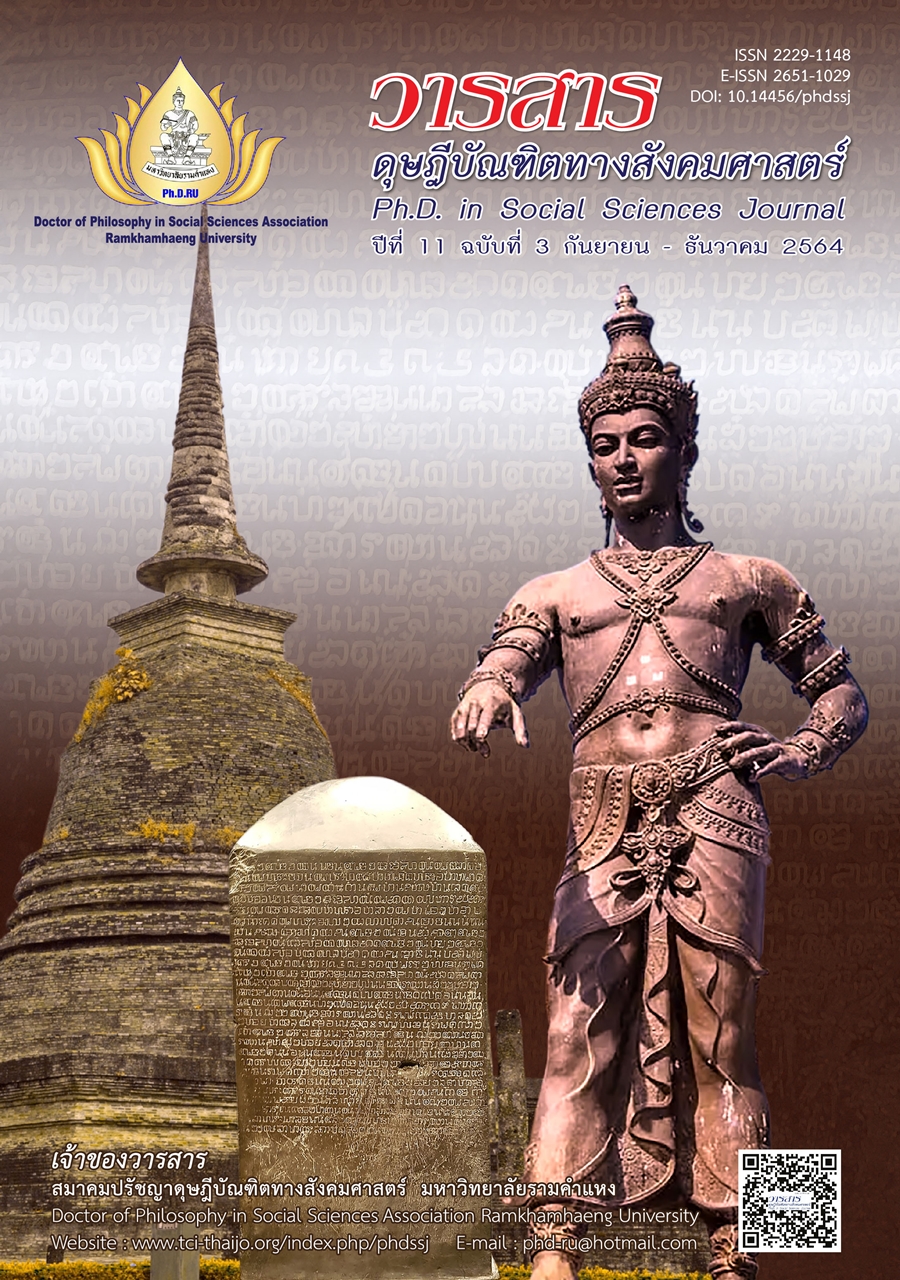ผลกระทบของการรับรู้การจัดการข้อร้องเรียนและบุพปัจจัยต่อความภักดีของลูกค้าโรงแรมในเมืองพัทยา
Main Article Content
บทคัดย่อ
บทความวิจัยนี้มีวัตถุประสงค์เพื่อศึกษาผลกระทบของการรับรู้การจัดการข้อร้องเรียนและบุพปัจจัยต่อความภักดีของลูกค้าโรงแรมในเมืองพัทยา ซึ่งงานวิจัยในครั้งนี้ใช้วิธีผสมผสานทั้งการวิจัยเชิงปริมาณและการวิจัยเชิงคุณภาพ การวิจัยปริมาณเก็บข้อมูลภาคสนาม ด้วยการเก็บข้อมูลด้วยการไม่อาศัยหลักความน่าจะเป็น โดยการเลือกตัวอย่างแบบเจาะจง สถิติที่ใช้ในการวิเคราะห์ข้อมูลเชิงปริมาณ ได้แก่ ค่าเฉลี่ย ส่วนเบี่ยงเบนมาตรฐาน และการวิเคราะห์ตัวแบบสมการโครงสร้างด้วยโปรแกรมสำเร็จรูปทางสถิติ การวิจัยเชิงคุณภาพใช้วิธีการ การสัมภาษณ์เชิงลึก โดยใช้วิธีสุ่มตัวอย่างแบบเฉพาะเจาะจง เครื่องมือในการศึกษาเป็นแบบสัมภาษณ์แบบไม่มีโครงสร้าง และใช้วิธีตรวจสอบวิเคราะห์ข้อมูลแบบ สามเส้า นอกจากนี้ ยังใช้วิธีการสัมภาษณ์กลุ่ม เครื่องมือในการศึกษาเป็นแบบสัมภาษณ์กลุ่มแบบไม่มีโครงสร้าง
ผลการวิจัย พบว่า แบบจำลองจากการประมวลผลสมการโครงสร้าง คุณภาพในการให้บริการของธุรกิจโรงแรมในเมืองพัทยามีผลกระทบในทางบวกต่อภาพลักษณ์องค์การของธุรกิจโรงแรมในเมืองพัทยาอย่างมีนัยทางสถิติ คุณภาพในการบริหารการของธุรกิจโรงแรมในเมืองพัทยามีผลกระทบในทางบวกต่อความภักดีของลูกค้าที่เข้ามาใช้บริการธุรกิจโรงแรมในเมืองพัทยาอย่างมีนัยทางสถิติ ความพึงพอใจของลูกค้าที่มาใช้บริการธุรกิจโรงแรมในเมืองพัทยามีผลกระทบในทางบวกต่อการรับรู้การจัดการข้อร้องเรียนของลูกค้าที่เข้ามาใช้บริการธุรกิจโรงแรมในเมืองพัทยาอย่างมีนัยทางสถิติ ความพึงพอใจของลูกค้าที่เข้ามาใช้บริการธุรกิจโรงแรมในเมืองพัทยามีผลกระทบในทางบวกกับความภักดีของลูกค้าที่เข้ามาใช้บริการธุรกิจโรงแรมในเมืองพัทยาอย่างมีนัยทางสถิติ และการรับรู้การจัดการข้อร้องเรียนของลูกค้ามีผลกระทบในทางบวกต่อความภักดีของลูกค้าที่เข้ามาใช้บริการธุรกิจโรงแรมในเมืองพัทยาอย่างมีนัยทางสถิติ
Article Details
บทความวิชาการ บทความวิจัย และบทวิจารณ์หนังสือในวารสารดุษฎีบัณฑิตทางสังคมศาสตร์ เป็นความคิดเห็นของผู้เขียน มิใช่ของคณะผู้จัดทำ และมิใช่ความรับผิดชอบของสมาคมปรัชญาดุษฎีบัณฑิตทางสังคมศาสตร์ มหาวิทยาลัยรามคำแหง (กรณีการทำวิจัยในมนุษย์ ผู้วิจัยต้องผ่านการอบรมจริยธรรมการวิจัยในมนุษย์ และนำหลักฐานมาแสดง)
เอกสารอ้างอิง
Aaker, D. A. (1991). Managing brand equity. Free Press.
Barich, H., & Kotler, P. (1991). A framework for marketing image management. Sloan Management Review, 32(2), 94-104.
Camacho, M. A. R., Silva, M. A. C., & Florencio, B. P. (2017). Corporate responsibility under the ECSI model: An application in the hotel sector. European Research on Management and Business Economics, 23(1), 23-32.
Cheng, B. L., & Rashid, M. Z. A. (2013). Service quality and the mediating effect of corporate image on the relationship between customer satisfaction and customer loyalty in the Malaysian hotel industry. Gadjah Mada International Journal of Business, 15(2), 99-112.
Comrey, A. L., & Lee, H. B. (1992). A first course in factor analysis. Psychology Press.
Esmaeilpour, M., & Barjoei, S. (2016). The effect of corporate image on customer satisfaction through brand equity. Advances in Management & Applied Economics, 6(4), 95-109.
Getty, J. M., & Getty, R. L. (2003). Lodging Quality Index (LQI): Assessing customers’ perceptions of quality deliver. International Journal of Contemporary Hospitality Management, 15(2), 94-104.
Homburg, C., Fürst, A., & Koschate, N. (2009). On the importance of complaint handling design: A multi-level analysis of the impact in specific complaint situations. Academy of Marketing Science, 38, 265-287.
Johnson, M. D., Nader, G., & Fornell, C. (1996). Expectations, perceived performance, and customer satisfaction for a complex service: The case of bank loans. Journal of Economic Psychology, 17(2), 163-182.
Kandampully, J., & Hu, H. H. (2007). Do hoteliers need to manage image to retain loyal customers. International Journal of Contemporary Hospitality Management, 19(6), 435-443.
Kaur, H., & Soch, H. (2013). Mediating roles of commitment and corporate image in the formation of customer loyalty. Journal of Indian Business Research, 5(1), 33-51.
Keshavarz, Y., Jamshidi, D., & Bakhtazma, F. (2016). The influence of service quality on restaurants’ customer loyalty. Arabian Journal of Business and Management Review, 6(4), 1-16.
Ministry of Tourism & Sports. (2019). Domestic tourism statistics 2017 (Classify by region and province). Retrieved from https://www.mots.go.th/more_news_new.php?cid=504 [In Thai]
Minkiewicz, J., Evans, J., Bridson, K., & Mavondo, F. (2011). Corporate image in the leisure services sector. Journal of Services Marketing, 25(3), 190-201.
National Strategy Announcement 2018-2037. (2018). Royal Thai Government Gazette, 135(82 A), 21-27. [In Thai]
Office of the National Economic and Social Development Council. (2019). GDP Q4 2018, and outlook for 2019. Retrieved from https://www.nesdc.go.th/ewt_dl_link.php?nid=8659 [In Thai]
Oliver, R. L. (1981). Measurement and evaluation of satisfaction processes in retail settings. Journal of Retailing, 57(3), 25-48.
Oliver, R. L. (1997). Satisfaction a behavioral perspective on the consumer. McGraw-Hill.
Oliver, R. L. (1999). Whence consumer loyalty. Journal of Marketing, 63(1), 33-44.
Pallant, J. (2007). SPSS survival manual: A step by-step guide to data analysis using SPSS version 15. McGraw-Hill.
Parasuraman, A., Zeithaml, V., & Berry, L. L. (1985). A conceptual model of service quality and it’s implications for future research. Journal of Marketing, 49(4), 41-50.
Parasuraman, A., Zeithaml, V., & Berry, L. L. (1988). Servqual: A multiple-item scale for measuring consumer perceptions of service quality. Journal of Retailing, 64(1), 12-40.
Pattaya City. (2016). Pattaya City plan (2018-2021). Author. [In Thai]
Rothenberg, S., Grewal, D., & Iyer, G. R. (2008). Understanding the role of complaint handling on consumer loyalty in service relationship. Journal of Relationship Marketing, 7(4), 359-375.
Russell-Bennett, R., McColl-Kennedy, J. R., & Coote, L. V. (2007). Involvement, satisfaction, and brand loyalty in a small business services setting. Journal of Business Research, 60(12), 1253-1260.
Singh, V., Jain, A., & Choraria, S. (2016). Exploring the role of complaint handling among complaining consumers. Business and Economics Journal, 20(4), 331-344.
Su, L., Swanson, S. R., & Chen, X. (2016). The effects of perceived service quality on repurchase intentions and subjective well-being of Chinese tourists: The mediating role of relationship quality. Tourism Management, 52(3), 82-95.
Tax, S. S. (1993). The role of perceived justice in complaint resolutions: Implications for services and relationship marketing. University Microfilms international a Bell & Howell Information Company. Arizona State University.
Tolba, A., Seoudi, A., & Meshreki, H. (2015). Effect of justice in complaint handling on customer loyalty: Evidence from Egypt. Global Journal of Business Research, 9(3), 1-14.
Tourism Council of Thailand. (2011). Thailand tourism confidence index 2011/1. Retrieved from http://www.thailandtourismcouncil.org/wp-content/uploads/2021/08/TTCI_2011-1.pdf [In Thai]
Wirtz, J., & Lovelock, C. (2016). Services marketing: People, technology, strategy (8th ed.). World Scientific.
Wu, H. C. (2014). The effects of customer satisfaction, perceived value, corporate image and service quality on behavioral intentions in gaming establishments. Asia Pacific Journal of Marketing and Logistics, 26(4), 540-565.
Wu, L. W. (2011). Satisfaction, inertia, and customer loyalty in the varying levels of the zone of tolerance and alternative attractiveness. Journal of Services Marketing, 25(5), 310-322.
Zeithaml, V. A., Bitner, M. J., & Gremler, D. D. (2013). Service marketing integrating customer focus across the firm (6th ed.). McGraw-Hill.


